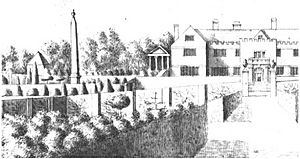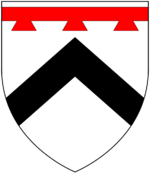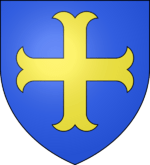Prideaux Place facts for kids
Quick facts for kids Prideaux Place |
|
|---|---|

South front, remodelled c. 1810–33 in Strawberry Hill Gothic style
|
|
| Location | Padstow, Cornwall, England |
|
Listed Building – Grade I
|
|
| Designated | 24 April 1953 |
| Reference no. | 1212008 |
| Designated | 22 November 1992 |
| Reference no. | 1001249 |
| Lua error in Module:Location_map at line 420: attempt to index field 'wikibase' (a nil value). | |
Prideaux Place is a beautiful old country house located in Padstow, Cornwall, England. It is considered a very important historic building. For over 400 years, it has been the home of the Prideaux family.
The house was built in 1592 by Sir Nicholas Prideaux, who was a well-known lawyer. Over the years, different family members made the house bigger and changed its style. It now has 81 rooms and mixes the traditional E-shape of old Elizabethan buildings with a fancy 18th-century style called Strawberry Hill Gothic.
Inside, Prideaux Place holds many valuable items. There are paintings of kings and queens, family members, and beautiful old furniture. The house also has a special collection of porcelain. A ceiling in the Great Chamber, which was recently uncovered, is a wonderful example of Elizabethan plasterwork.
The estate around the house is very large, covering thousands of acres. It also has one of England's oldest deer parks. In 1968, about 100 fallow deer lived there, a big increase from just six after World War II.
Contents
History of Prideaux Place
Before the 1500s, the land where Prideaux Place now stands belonged to a religious house called Bodmin Priory. When King Henry VIII decided to close down these religious houses, the head of Bodmin Priory, Prior Thomas Mundy, made a plan. He leased the land to his niece, Johanna Mundy, and her husband, William Prideaux, for a very long time (99 years) and a small yearly rent.
Later, in 1539, Bodmin Priory was given to the King. The Prideaux family then managed to buy the land outright. It is said they got a good deal on the land as a kind of payment for "an unpleasant wife," referring to the prior's niece.
The Prideaux Family History
The Prideaux family is thought to have come from Normandy, France, after the Norman Conquest in 1066. They first settled in Cornwall at a place called Prideaux Castle. Later, they moved to Devon and spread into different family branches.
Key Family Members
- William Prideaux (died 1564): He was the one who first leased the land of Padstow from his uncle, Prior Thomas Mundy, in 1537. He lived at Trevose, as Prideaux Place had not yet been built.
- Nicholas Prideaux (died 1560): William's uncle. He bought the land of Padstow, making it fully owned by the family. He did not have children, so he chose his nephew, Roger Prideaux, to inherit his estates.
- Roger Prideaux (around 1524–1582): He was a Member of Parliament (MP) for Totnes in Devon. An MP is a person elected to represent an area in the country's government. He also held important local roles like Sheriff of Devon.
- Sir Nicholas Prideaux (1550–1627): Roger's oldest son. He was also an MP and Sheriff of Cornwall. The Sheriff was a high-ranking official who helped keep law and order. Sir Nicholas built the main part of Prideaux Place in 1592. He moved into the new house after 1600. A historian from that time, Richard Carew, wrote that Sir Nicholas could see the whole town and harbor from his "new and stately house."
- John Prideaux (1583–1649): He inherited Prideaux Place. He did not have children, so the house later went to his half-nephew, Edmund Prideaux.
- Edmund Prideaux (1606–1683): He became an MP for Saltash and Sheriff of Cornwall. During the Civil War, he supported the Parliamentarians, who were against the King. After the King returned to power in 1660, Edmund became a favorite of King Charles II. This might have been because his sister was married to Sir William Morice, who was a very important government official for the King. It is said that Edmund's mother, Honor Fortescue, jumped to her death from the staircase at Prideaux Place. Her ghost, known as "The Green Lady," is believed to still be in the house.
- Edmund Prideaux (1693–1745): He inherited Prideaux Place in 1728. He loved art and architecture and traveled to Italy to see famous buildings. He also drew many country houses, and his drawings are still kept at Prideaux Place. He brought parts of another grand house, Stowe House, to Prideaux Place, including the main staircase and a wood-paneled room.
The Prideaux-Brune Family
- Rev. Charles Prideaux-Brune (1760–1833): He was the oldest son from his father's second marriage. In 1799, he added "Brune" to his last name because he inherited land from the Brune family. Between 1810 and 1833, he made big changes to Prideaux Place, giving it the Gothic Revival style, similar to Horace Walpole's famous Strawberry Hill House.
- John Charles Prideaux-Brune (1916–1988): He was a musician. During World War II in 1944, Prideaux Place was used by the US Army's 121st Engineer Combat Battalion. These soldiers marched from Prideaux Place to get ready for the D-Day Normandy landings.
- Peter Prideaux Brune (1944–2025): He was the oldest son and lived at Prideaux Place with his wife Elisabeth. Peter passed away peacefully on July 10, 2025.
Prideaux Place in Films and TV
Prideaux Place has been a popular location for movies and television shows.
- In 1975, it was used for an episode of the series A Ghost Story for Christmas called The Ash Tree.
- In 2006, the BBC filmed the Antiques Roadshow at Prideaux Place. This show helps people find out how much their old items are worth.
- The house has also been featured in many German TV films based on novels by Rosamunde Pilcher.
- It appeared in an episode of Quest TV's 'Salvage Hunters', a show about finding valuable old items.
See also
- Padstow Coastal Gun Battery




